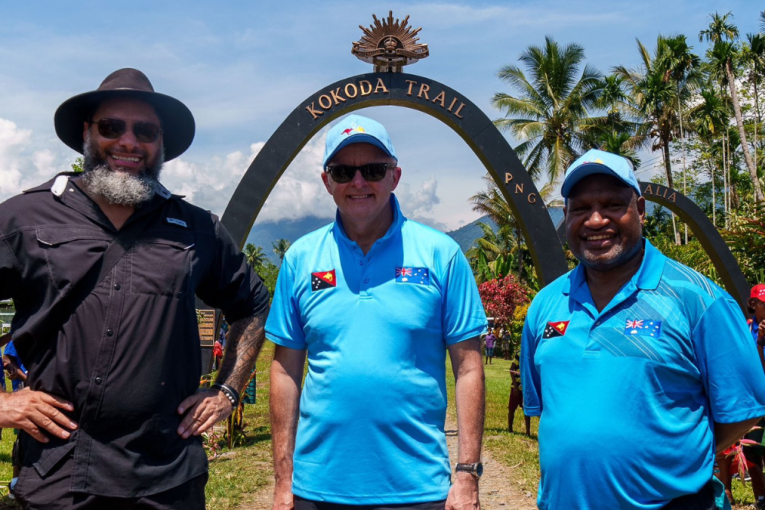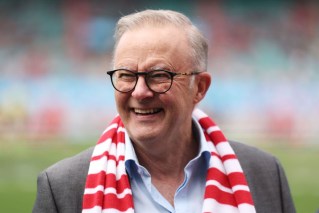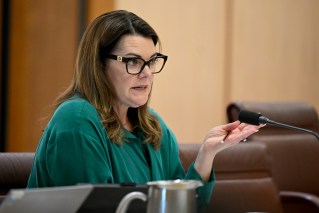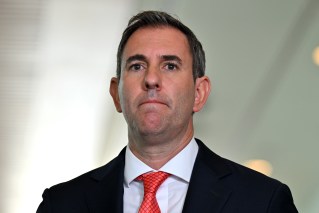COVID-19 ‘turning point’ for Australia shifts focus to reducing our risk

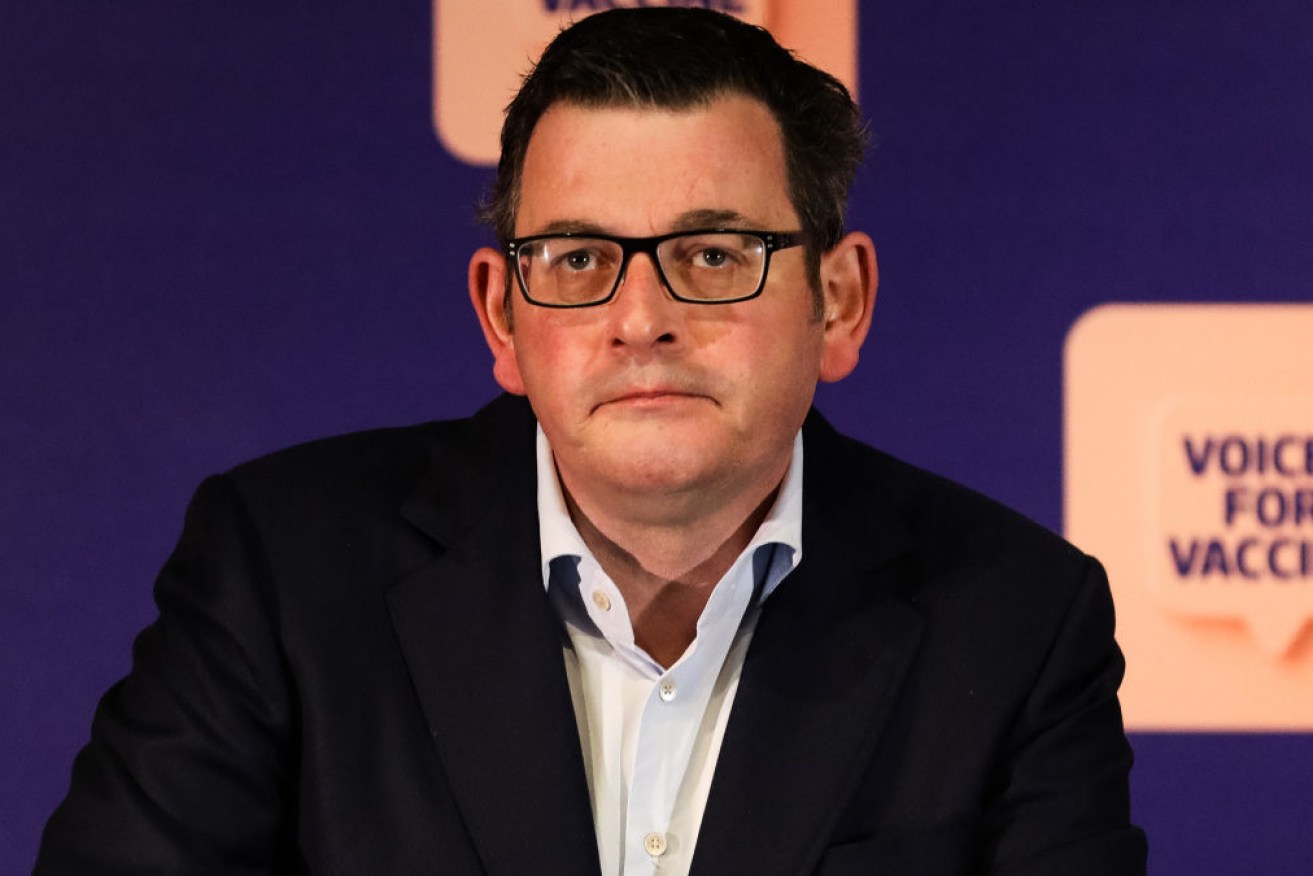
Daniel Andrews says Victoria's COVID cases will continue to rise. Photo: Getty
Daniel Andrews has made the bombshell admission that Victoria will not see a return to zero COVID cases, in what federal Treasurer Josh Frydenberg called a “turning point” for the government’s push for the nation to “live with the virus”.
On Wednesday, Premier Andrews warned Victorians “will not see these case numbers go down”.
It came after New South Wales Premier Gladys Berejiklian made a similar admission of her own.
Leading epidemiologists said the policy U-turn from Australia’s two biggest states was a sign that COVID’s Delta strain moved too quickly for even our world-leading contact tracers to track.
“Initially they thought they went in early enough and hard … but NSW and Victoria are starting to understand this isn’t going back to zero,” University of NSW epidemiologist Mary-Louise McLaws said.
“We always should have gone for zero, and we were very successful.
“You have to give accolades to states for achieving that, but that isn’t going to continue any more. Now we have to work on reducing our risk.”
COVID cases are ‘going to go up’
As recently as this week, Mr Andrews expressed hope Victoria would be able to suppress its current Delta outbreak back to zero.
On Tuesday, Victorian politicians raised hopes of the state winding back some crushing restrictions, towards a ‘lockdown lite’.
Both those were blown out of the water on Wednesday morning when the state logged 120 new COVID cases, its highest number in a year.
It was a bitter blow after a month of hard lockdown.
Although still just a tenth of the 1100 cases NSW recorded on Wednesday, Mr Andrews seemed to all but confirm there were no policy levers left to pull, and therefore it couldn’t be hoped that cases would decrease.
“We will not see these case numbers go down. They are going to go up.
The question is, by how many and how fast?” he said.
Mr Andrews noted modelling from the Burnet Institute that the lockdown may have prevented 6000 cases of COVID-19 in Victoria, but the admission is a stark about face on the state’s stance on the virus.
Less than a month ago Vic celebrated a 'donut day', now Covid Zero's dead. I think abandoning covid zero makes perfect sense. But navigating the whiplash from that change in mindset must be super disorienting – especially for those who don't religiously watch press conferences
— Ange McCormack (@_angemccormack) September 1, 2021
Ms Berejiklian acknowledged several weeks ago that her state would likely not be able to return to zero COVID, and instead laid out tentative steps to slightly ease lockdowns until vaccine rates improve.
NSW has been under hard lockdown for weeks, but the state government has made rapidly boosting vaccinations its key focus, rather than an aim of reducing cases to zero.
Both Victoria and NSW are now talking more in terms of the “flattening the curve” rhetoric of the pandemic’s early stages.
But instead of painting lockdowns as a way to buy time to bolster hospital systems, the premiers say restrictions must remain until vaccination rates hit the 70 and 80 per cent targets.
Philosophical discussion on reopening
Mr Andrews’ admission opens up a fracturing between the two largest states, who can’t pursue COVID elimination, and premiers in the rest of the country who are gunning for zero community transmission.
Western Australia’s Mark McGowan and Queensland’s Annastacia Palaszczuk have pointedly said they don’t plan to open their borders to any state with high case numbers, even once vaccinations hit the 80 per cent thresholds under the reopening plan.
Brendan Crabb, epidemiologist and director of the Burnet Institute, said Australia now faced a “philosophical” discussion about the level of risk allowed during the reopening phase.
Professor Crabb said COVID zero was “gone” once vaccination rates were high and reopening commenced.
However, countries including Singapore and Denmark had opened up while maintaining strict contact tracing and public health measures, and the United States had not. He said Australia had a choice.

Vaccines are the way out now, Ms Berejiklian and Mr Andrews say. Photo: AAP
“Are we going down the route of seeing if it’s feasible to keep low numbers? We have the chance to say we want a functioning test and trace system, that we don’t want an on-off cycle of epidemics with new variants,” Professor Crabb told TND.
“A low amount of COVID has meant a strong society and strong economy, and there’s every reason that will hold post-opening.
“The prudent course is to say ‘we’re in a very special position with low virus, it’s served us well’. We should be cautious about giving it up.”
Mr Frydenberg, who has been a strident critic of Mr Andrews’ COVID policies in Victoria, said he “welcomed the acknowledgement in Victoria that eliminating the Delta variant is an impossibility”, calling it “a turning point”.
“No other country has done it, and based on the best medical advice we have, we can’t do it,” he told a Parliament House press conference.
“So we have to learn to live with the virus.”
How to ‘work with COVID’
Professor McLaws, a COVID adviser to the World Health Organisation, said lockdowns and other standard public health measures in Australia had worked “very well” against earlier strains of the virus.
Despite those same levers not being sufficient to quell Delta outbreaks in NSW and Victoria, she pushed back on the idea that Australia needed to “live with COVID”.
“I hate that term. We need to move that saying to ‘we have to learn to work with the virus and reduce our risk’,” Professor McLaws said.
“For many people who get COVID, it’s not living with it. They say it’s like being hit by a truck. That’s not living, it’s suffering.”

Josh Frydenberg said Australia must “learn to live with the virus”. Photo: AAP
“Working with” COVID, Professor McLaws said, would include bolstering hospital systems, boosting contact tracing and keeping all settings at the “optimal” level that the Doherty Institute modelling said is needed to avoid lockdowns.
“It can’t just be focusing on vaccines, we have to think through several plans all at once. One criticism or limitation I see from most leaders is they can hold on to one big idea, which has been getting to zero,” she said.
“But they didn’t focus on quarantine or vaccination.
“This next stage, the realisation we won’t get to zero and now focusing only on vaccines, isn’t the whole story. They need to be able to handle multiple big ideas.”
But Professor Crabb said COVID zero was still a worthwhile goal to pursue.
“Pre-high vaccinations, it’s the only way to live freely,” he said.
“It’s actually the anti-lockdown approach, to be free of COVID before vaccinations are high. There’s no other way.”
Professor Crabb noted that just a month ago, even Mr Frydenberg and Mr Morrison had acknowledged lockdowns were the only option for Delta outbreaks.
“The strategy has to be zero until it’s safe not to be,” he said.
